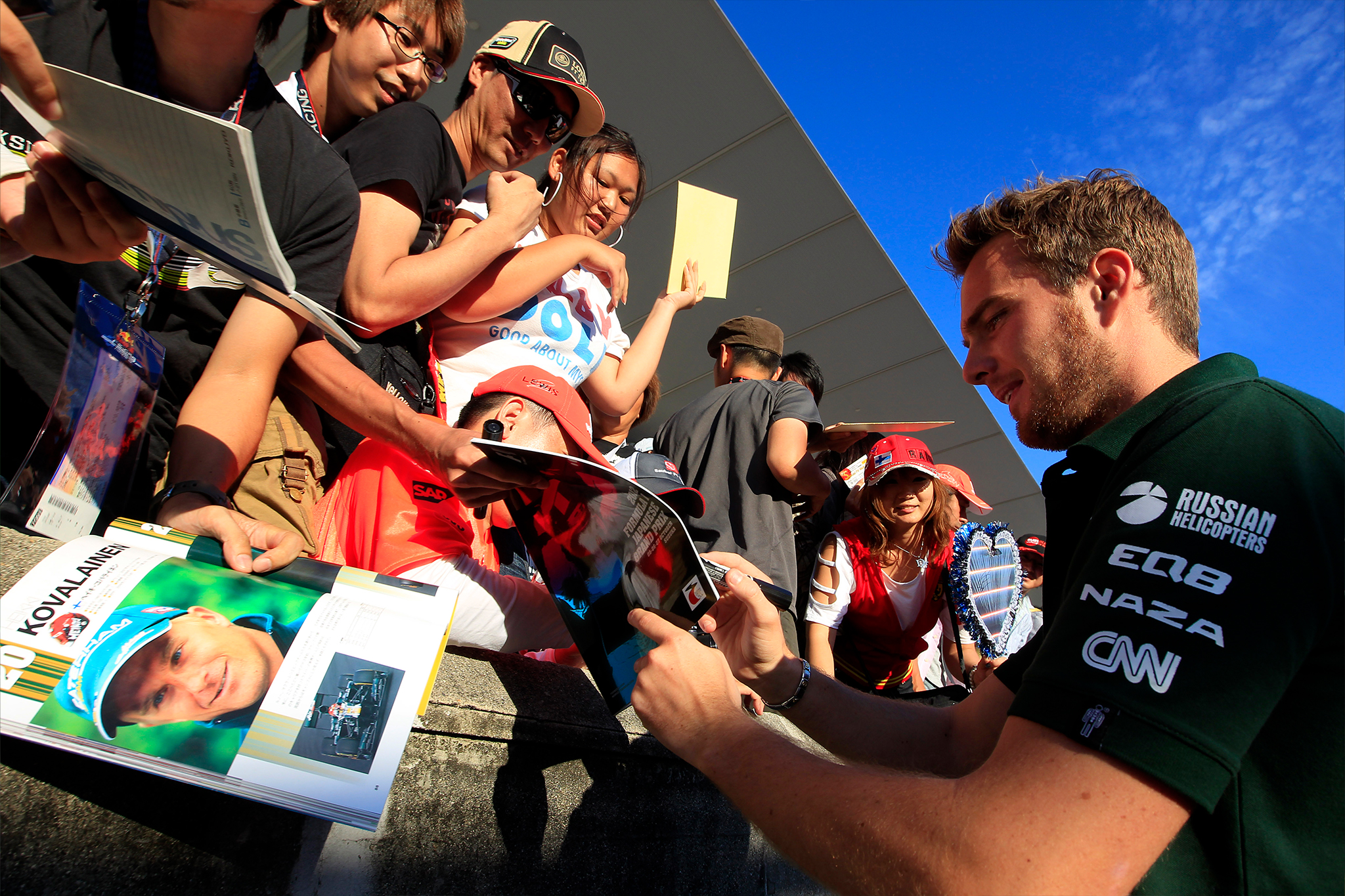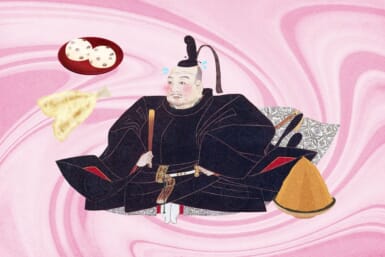The ever-popular Japanese Grand Prix returns this weekend, the last time the race will be held in its traditional late-season slot before switching to April in 2024. To mark the occasion, here are a few things to know about the race and the drivers that have tackled it.
More championships have been settled in Japan than in any other country
The first Japanese Grand Prix to be held as part of the Formula 1 World Championship, at a rain-drenched Fuji Speedway in 1976, saw Britain’s James Hunt become champion by one point ahead of Niki Lauda and turned out to be the first of 13 World Drivers’ Championship title deciders out of 36 World Championship Japanese Grands Prix (although the late-season slot does give it a probability advantage). Many of them have been memorable races as well, featuring two of the most infamous collisions in F1 history between title rivals Ayrton Senna and Alain Prost in 1989 and 1990. This weekend could see Red Bull’s Max Verstappen adding to that number.
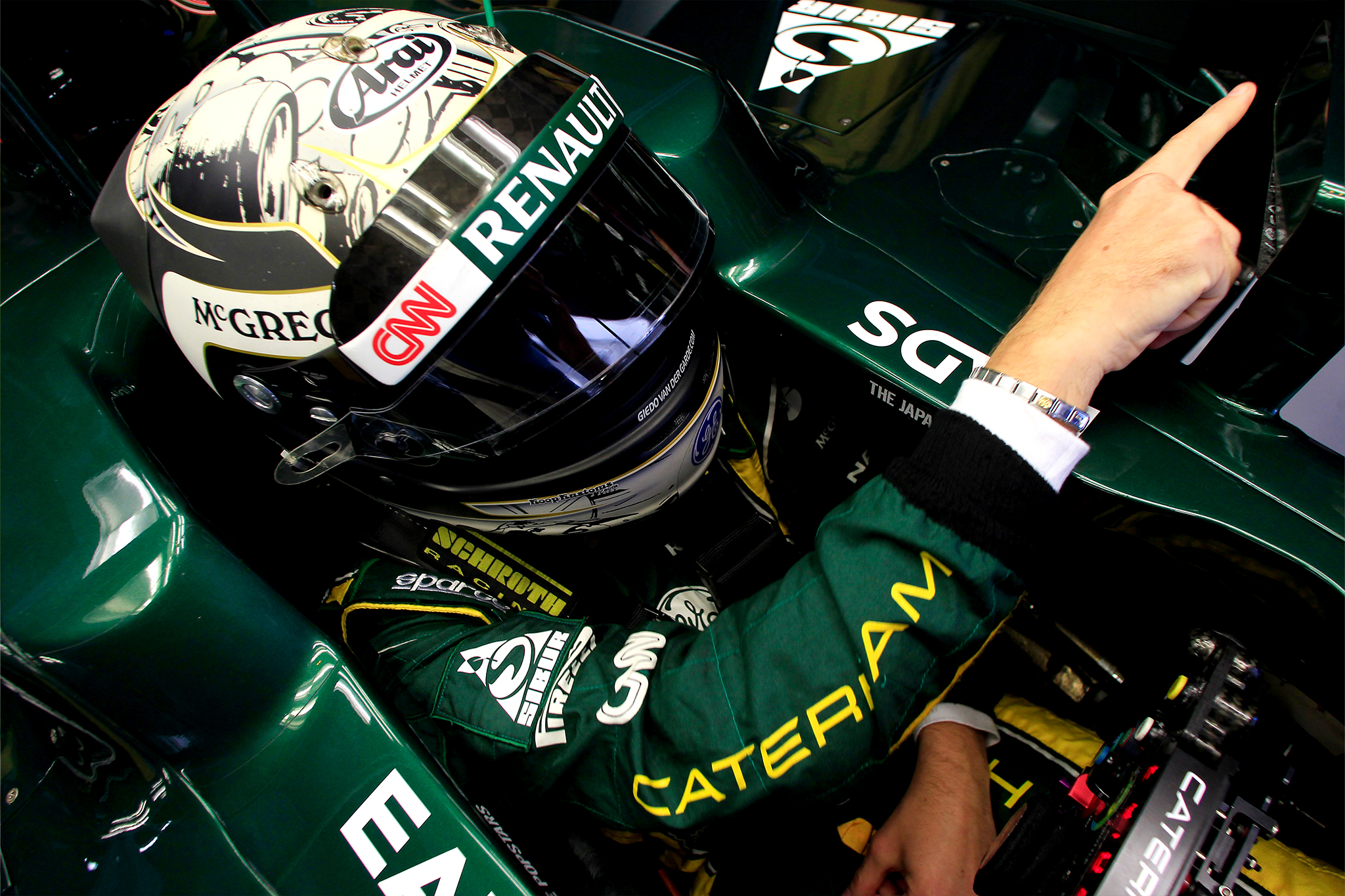
Shot by Charles Coates/LAT Photographic for Caterham F1
There’s always a lingering threat of rain
Being held amid Japan’s typhoon season gives many F1 fans the impression that the Japanese Grand Prix is often a wet race, but only nine races have featured rain, and of those nine, only five have seen truly soaking conditions. Aside from that first 1976 race, the heavens opened in 1994 at Suzuka, where Damon Hill produced arguably his best-ever drive in a race that had to be split and decided over aggregate times to beat Michael Schumacher and take the title fight down to the wire. There were crashes, restarts and epic battles at a drenched Fuji Speedway in 2007. Sadly, there was tragedy in 2014 at Suzuka when French driver Jules Bianchi crashed into the back of a recovery vehicle. He lost his life from injuries sustained at the accident nine months later. Last year’s race evoked several memories of that event, as it also started in appalling conditions and featured a recovery vehicle incident before being red flagged, restarted and finished after 36 laps.
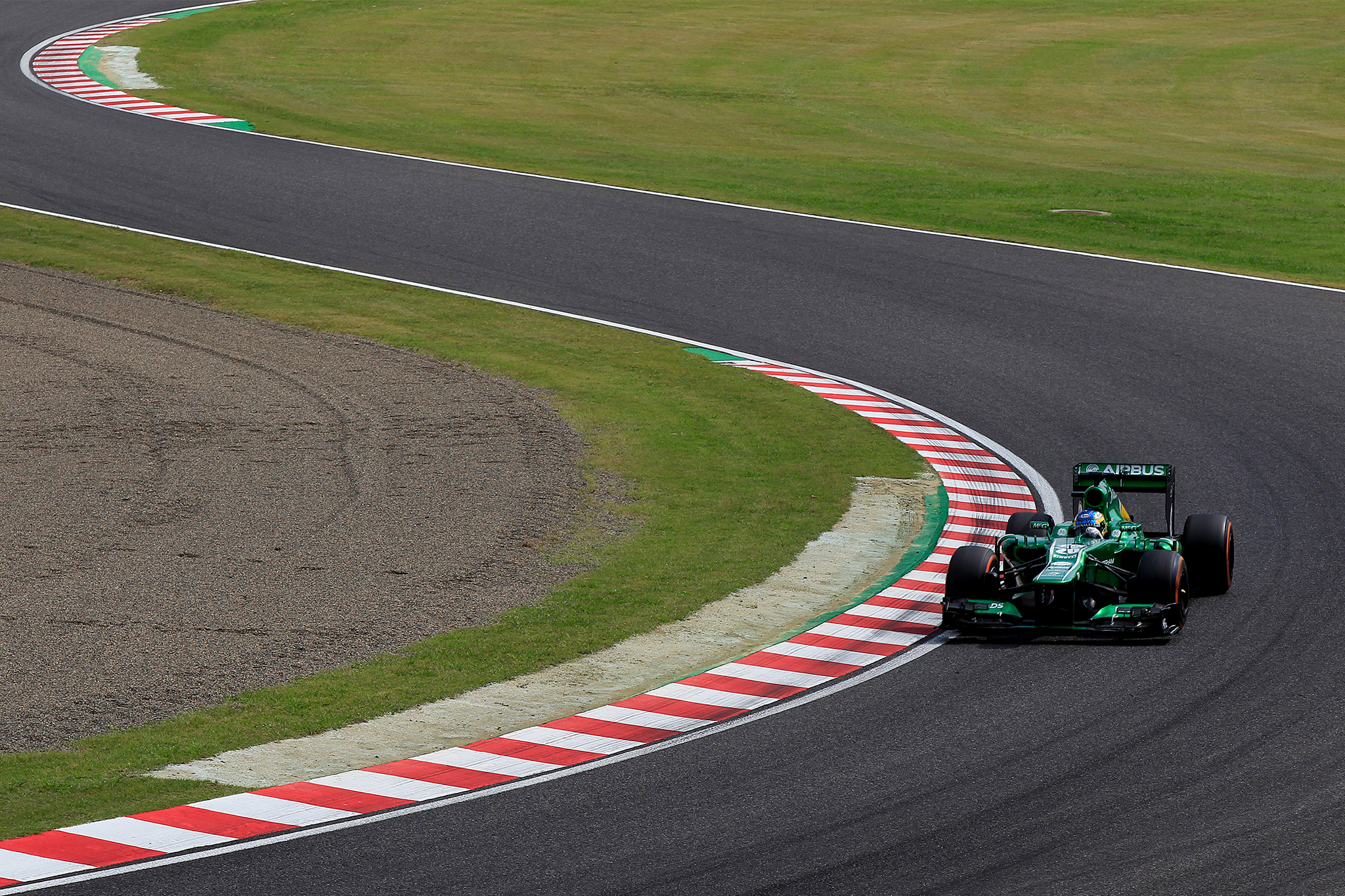
Shot by Charles Coates/LAT Photographic for Caterham F1
Two iconic racetracks have hosted the event
Under the shadow of Japan’s iconic mountain, Fuji Speedway has hosted the Japanese Grand Prix four times, with Mario Andretti taking the inaugural victory in 1976 for Ferrari. It was initially designed as a banked superspeedway for NASCAR-style races and boasts one of the longest straights in motorsport. However, after the money ran out, it was converted to a road course, opening in 1965.
The track already had a deadly reputation before joining the F1 calendar, with several fatal accidents in its early years, before a crash between Gilles Villeneuve and Ronnie Peterson in 1977 claimed the lives of a photographer and a race marshal. This, plus financial and travel issues, led to F1 abandoning the circuit and the country for the next decade. That race was also responsible for subsequently introducing the rule that made attending the podium mandatory after race winner Hunt and runner-up Carlos Reutemann left the circuit immediately to catch flights home. F1 returned to the now Toyota-owned and redeveloped speedway in 2007 and 2008 but was beset with problems, including flagrant parochialism, before the global financial crisis put the brakes on any further deals.
The current home of F1 racing in Japan, Suzuka Circuit in Mie Prefecture, was conceived by Soichiro Honda in the late 1950s and designed by Dutchman John “Hans” Hugenholtz, becoming Honda’s test track upon completion in 1962. Its most iconic feature is its figure-of-eight layout (the only such design on the F1 calendar), but some original proposals had plans for as many as three crossovers. The circuit hosted the first race to be called the Japanese Grand Prix in 1963, a sports car race won by the Briton Peter Warr. It first appeared on the F1 calendar in 1987. Ferrari once again took the inaugural victory, this time with Gerhard Berger. It has proven to be a firm favorite for drivers, who love the technical challenge it provides despite the once fearsome 130R corner being altered in 2003.
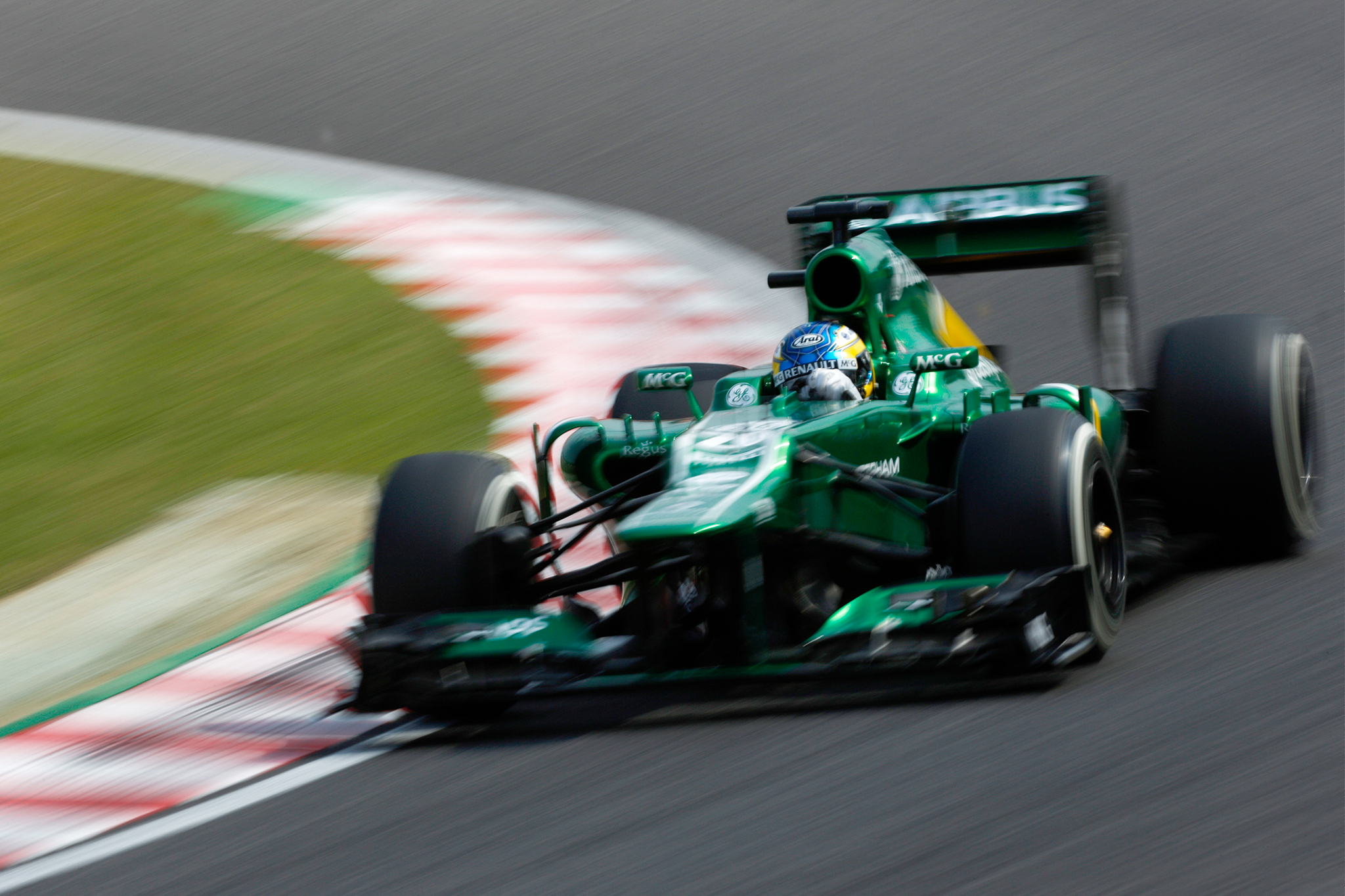
Shot by Charles Coates/LAT Photographic for Caterham F1
Only two Japanese drivers have stood on an F1 podium, and they did it at Suzuka
For the 18 Japanese drivers who have started an F1 race, home advantage has proved to be anything but. Both races at Fuji Speedway in 1976 and 1977 saw a bunch of local talent attempting to make their mark, including Masahiro Hasemi (winner of the 1975 non-championship race at Fuji), Japanese racing legend Kazuyoshi Hoshino (“The fastest man in Japan” who, unfortunately, turned out not to be that fast) and Kunimitsu Takahashi, “The Father of Drifting.” All of them either retired or finished in non-points-scoring positions several laps down.
Satoru Nakajima (Japan’s first full-time F1 driver and points scorer) managed to mark the return of the Japanese Grand Prix at its new Suzuka home in 1987 by scoring points with a sixth-place finish. He repeated that achievement in 1990 but was overshadowed by compatriot Aguri Suzuki, who placed third and became the first Japanese driver to score a podium finish in an F1 World Championship race. However, the rest of the 1990s brought the Japanese fans nothing but disappointment with retirements and non-points-scoring finishes by numerous drivers. Ukyo Katayama, Japan’s most experienced F1 driver, retired from 63 out of the 95 races he contested, including three out of six Japanese Grand Prix. He placed no higher than 11th in the others.
In 2002, Takuma Sato managed a fifth-place points finish in his first home race, going one better with fourth in 2004. Kazuki Nakajima, the son of Satoru, couldn’t emulate his father’s Suzuka success, managing only lowly non-points finishes in 2008 and 2009. It took Kamui Kobayashi to give the Japanese fans something special with an overtaking masterclass for 7th place in 2010 and then a gutsy drive to 3rd in 2012, becoming the second and last Japanese driver to appear on the podium, not only at home, but in any F1 race since.

